Leicester has been a place of diverse culture and faith for some 2,000 years. A confirmed Roman temple has been discovered and references to other temples have also been found.
- Diwali signifies new beginnings, the victory of good over evil, light over darkness and knowledge over ignorance
- The first public Diwali Lights in Leicester were displayed in 1983, switched on by the oldest resident in the Asian community
- Leicester’s celebrations are believed to be the largest Diwali celebrations outside of India
The UK's largest celebrations
Diwali in Leicester is a huge, cultural celebration enjoyed by people who have come from far and wide to see the thousands of decorative Diwali lights along the city’s “Golden Mile”, enjoy spectacular firework displays and see homes, temples and gurdwaras all illuminated.
Diwali celebrations in Leicester however had very humble origins and it took a lot of determination over many decades to achieve the remarkable festivities we enjoy today.
What is Diwali?
Diwali, the Festival of Lights, is one of the most significant festivals in Indian culture and is celebrated by Hindus, Sikhs and Jains every autumn between mid-October and mid-November. It signifies new beginnings, the victory of good over evil, light over darkness and knowledge over ignorance.
It has a rich social and cultural heritage of legends and customs that include religious ceremonies, decoration of homes and temples, time with family and friends, feasting and exchanging gifts.
“For the Asian community, the festival of Diwali is not only of religious significance. It has given a sense of pride, a sense of being able to share with a wider cross section of people the sense of sharing the light. The spirit of Diwali can be shared with everybody”
Rita Patel
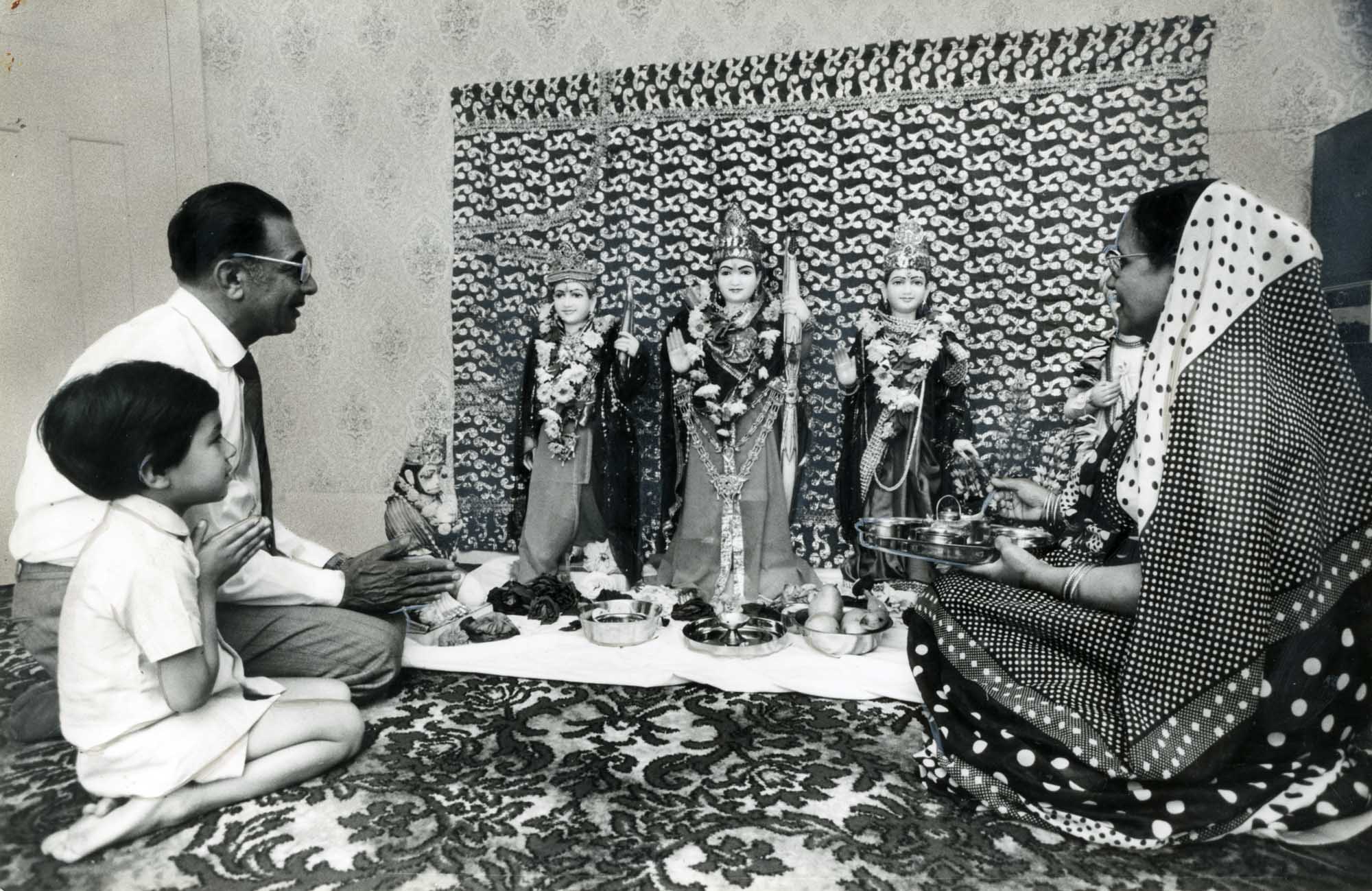
The early days
The 1950s and ‘60s saw many Sikhs and Hindus from India and East Africa settling in Leicester. New arrivals did what they could in those early days to keep their faith and traditions alive, worshipping mostly at home. Diwali was an important festival and newcomers continued to celebrate as best they could.
As the Asian community in Leicester grew, so did its Diwali celebrations. From 1972 the city became home to many Asians expelled from Uganda who were to settle and create an even greater appetite for Diwali festivities.
With a larger community to cater for, more Asian shops opened along the Belgrave Road, supplying specialist products from India. Leicester’s Asian community could now buy the ingredients to prepare popular Diwali foods and celebrations would start to take on a more traditional feel.
In 1977 Leicester City Council set up the Belgrave Neighbourhood Centre in a former Methodist church on the Belgrave Road. During the following decade, this was to have a significant effect on Diwali celebrations in the city.
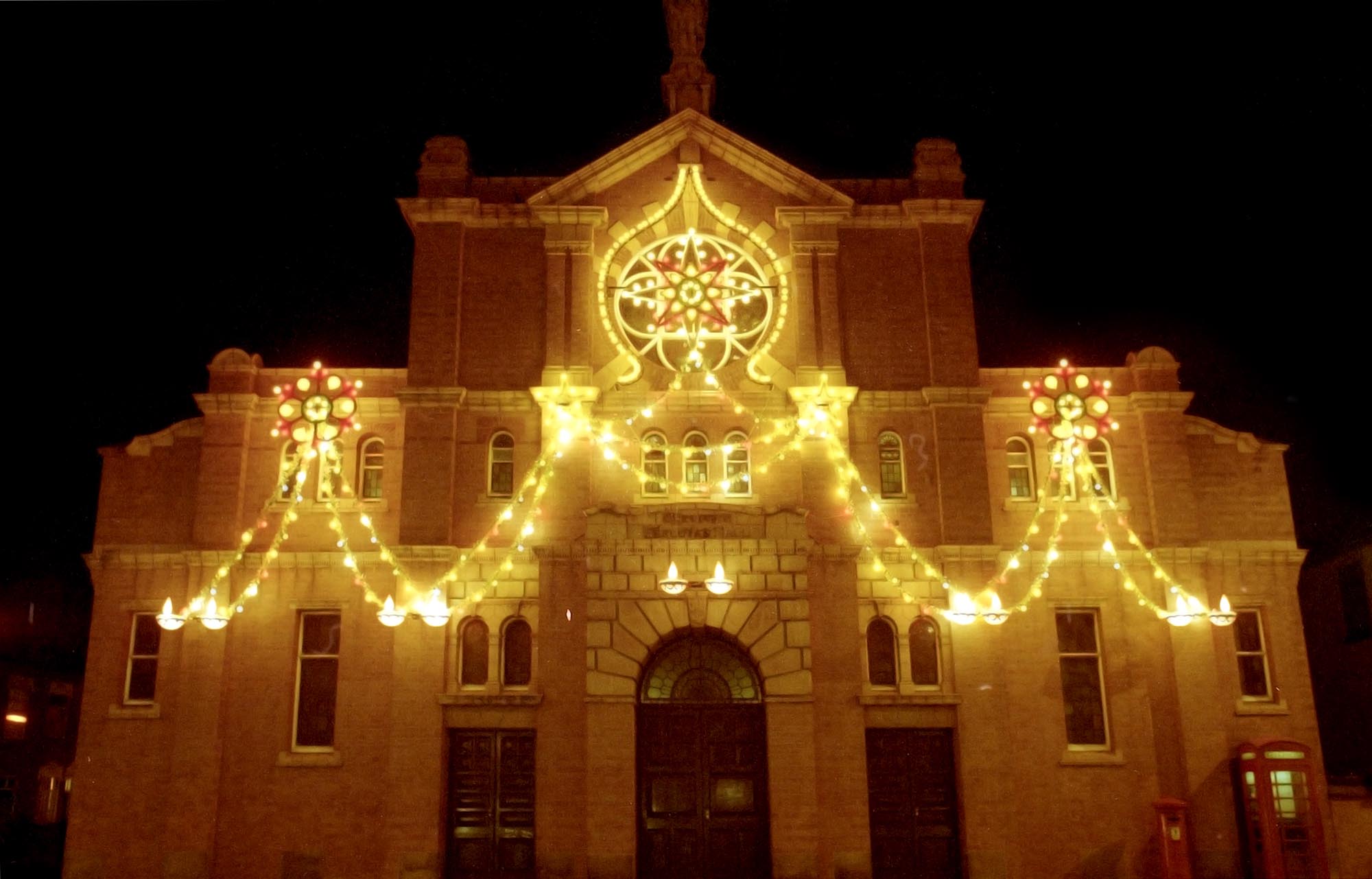
Diwali comes to life in Leicester
It was in the ‘80s that community workers, residents, councillors and council officers first discussed the idea of decorative Diwali lights. The first lights went on display in 1983, marking the foundation of the celebrations we know today. They ran along Belgrave Road from Dorset Street to Loughborough Road and were switched on by the community’s oldest resident.
By the 1990s the Diwali celebrations along Belgrave Road had developed a national reputation. What had originally been regarded as a local community celebration was now a major festival. Entertainment and firework spectaculars amused thousands and local media covered the Diwali nights with live broadcasts and documentaries.
The City Council and other agencies like the emergency services were by now more heavily involved in the event management as thousands of new visitors were creating increased challenges for the organisers. Road closures had to be organised, increased security was required and armies of street cleaners cleared up after the event.
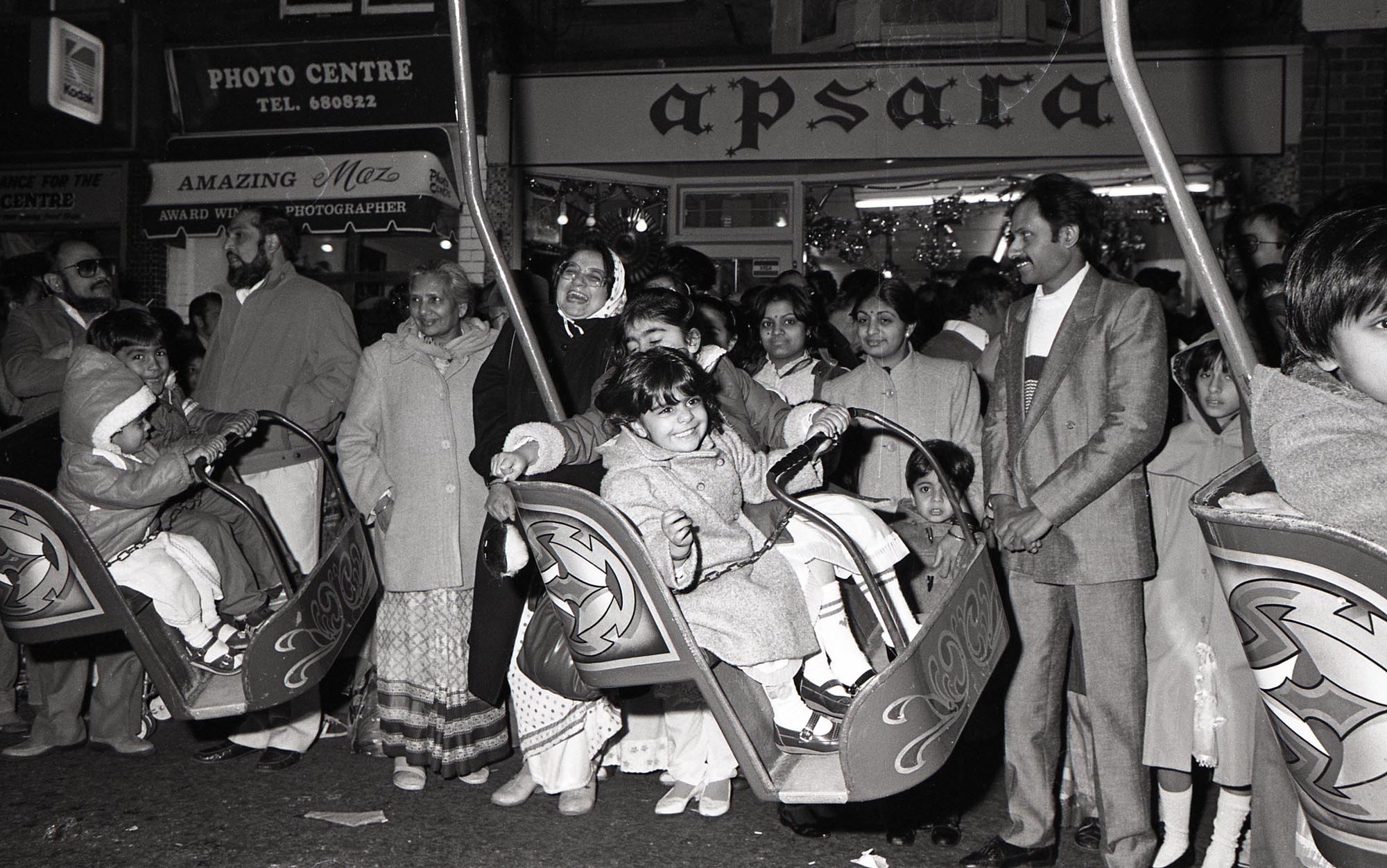
A modern, cross-cultural celebration
Leicester today has what is regarded as the largest Diwali celebrations outside of India. It is a huge multi-agency operation that takes months to plan.
As well as 6,500 lights all along Belgrave and Melton Roads there is a huge events programme collectively recognised as “Diwali Leicester”. Around 50 separate events are now spread across the city over a two-week period. It includes music, dance and live performances in a variety of venues, all ending in a spectacular firework display.
The celebrations now reflect a new age, a stronger community and a greater ambition for a festival with an international reputation.
Gallery
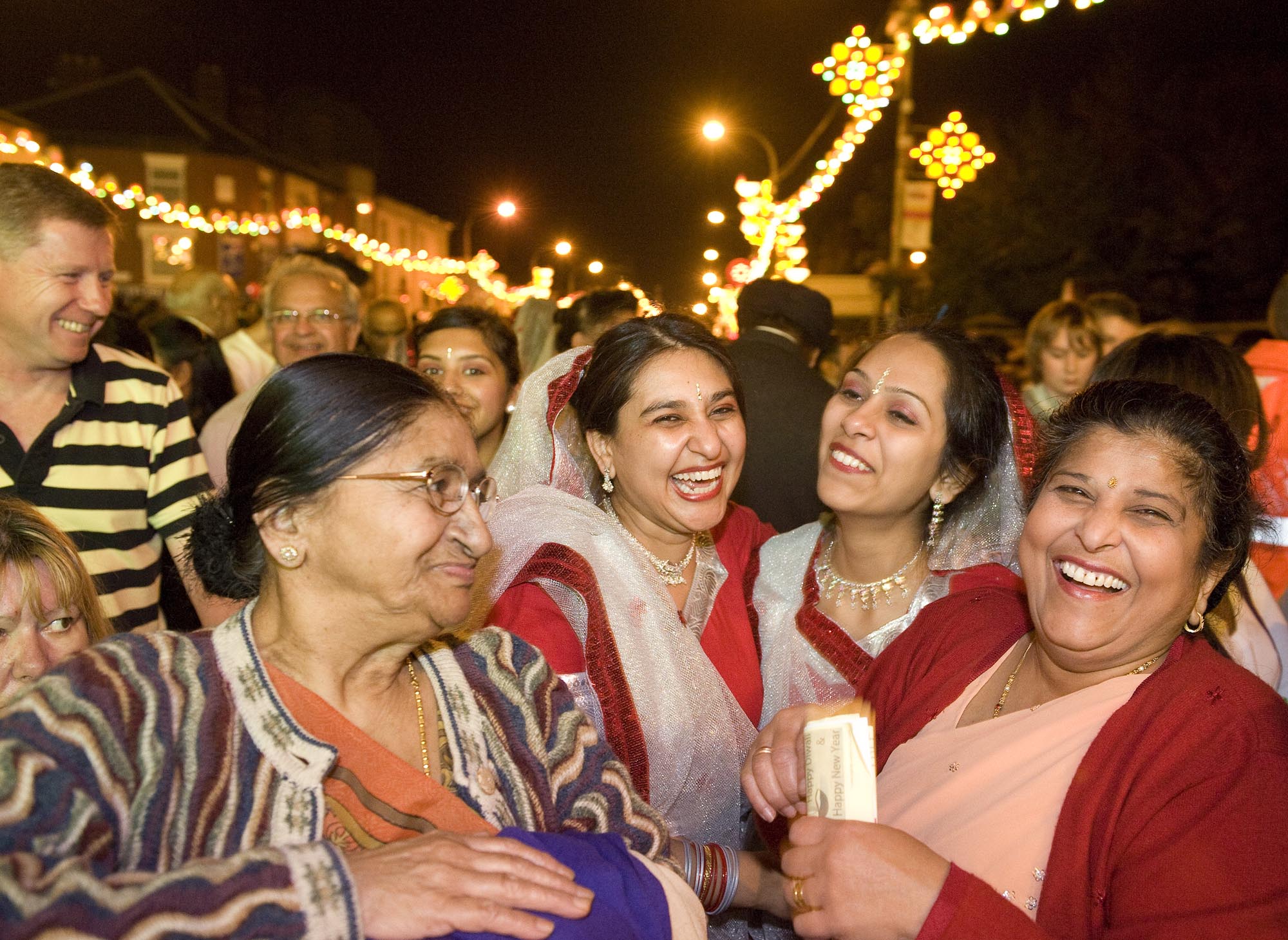
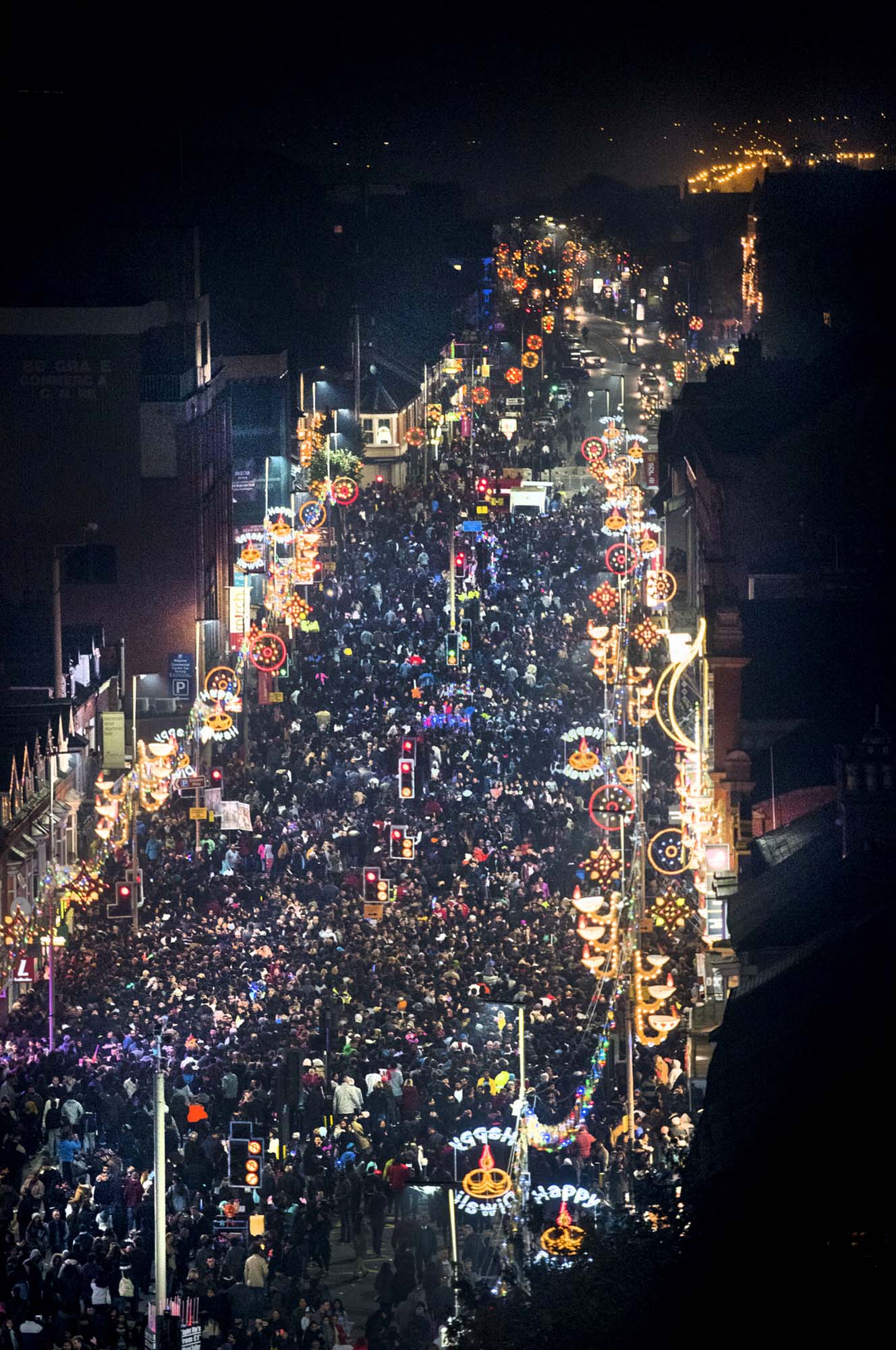
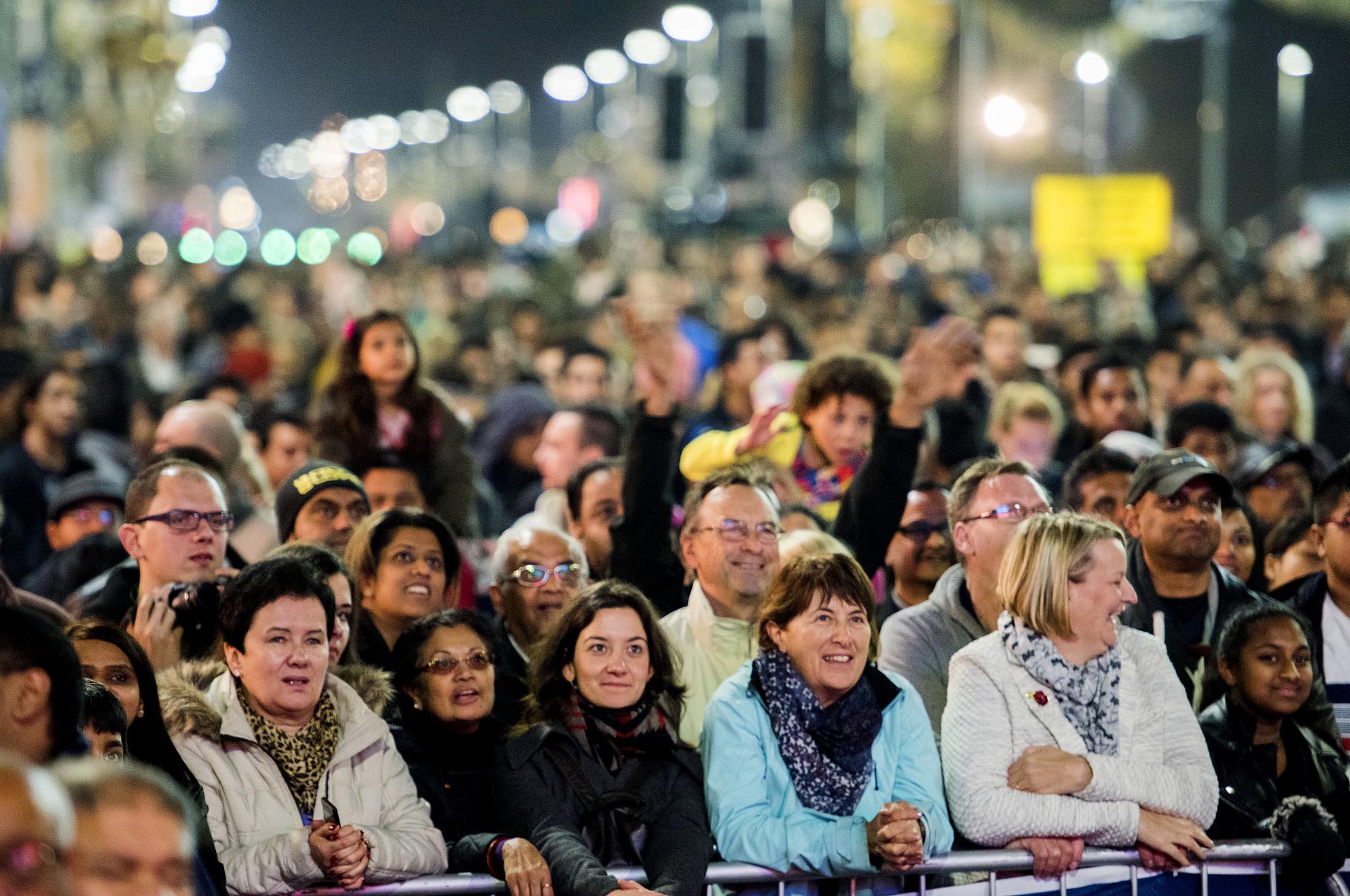
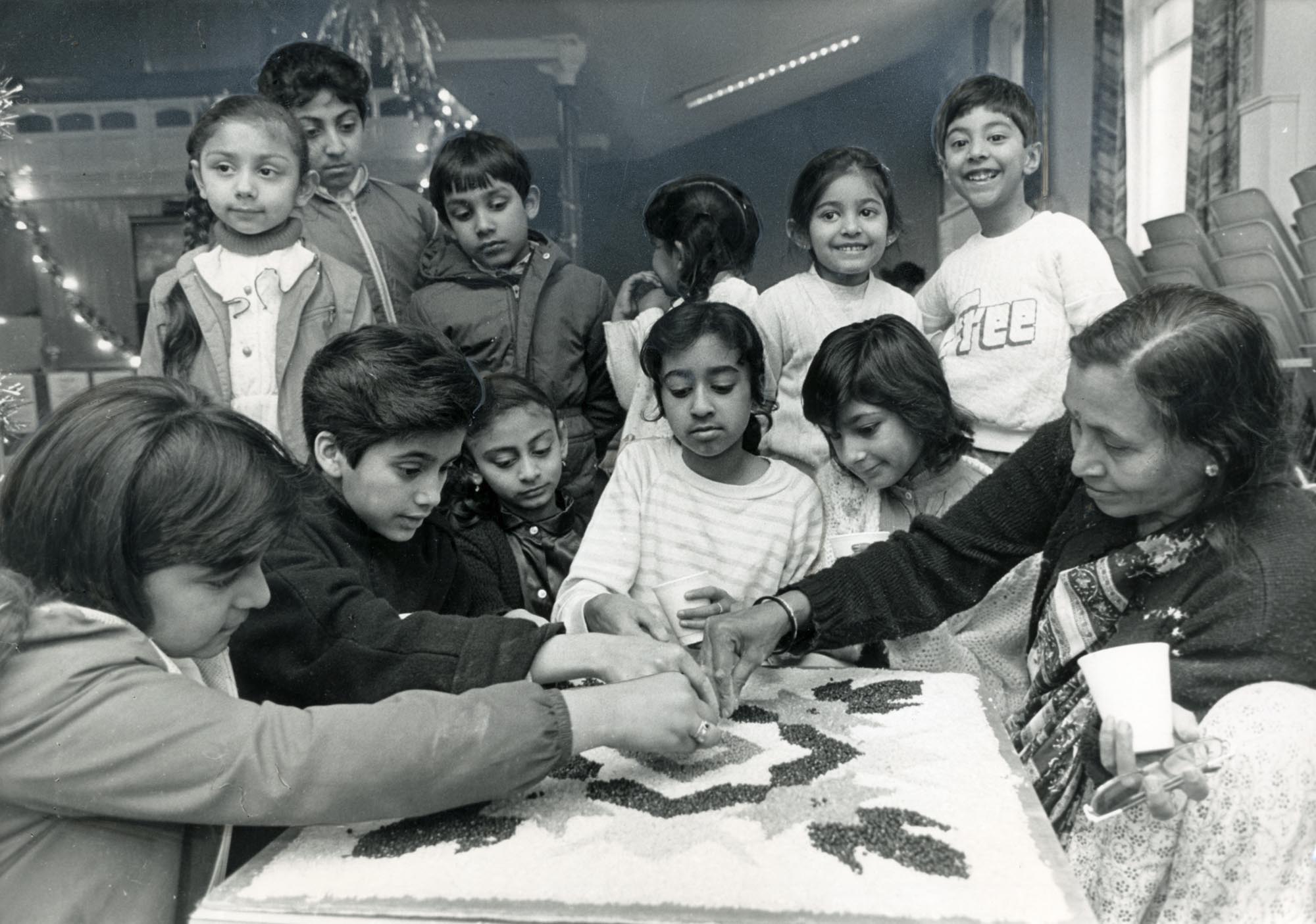
Leicester Mercury Archive at the University of Leicester
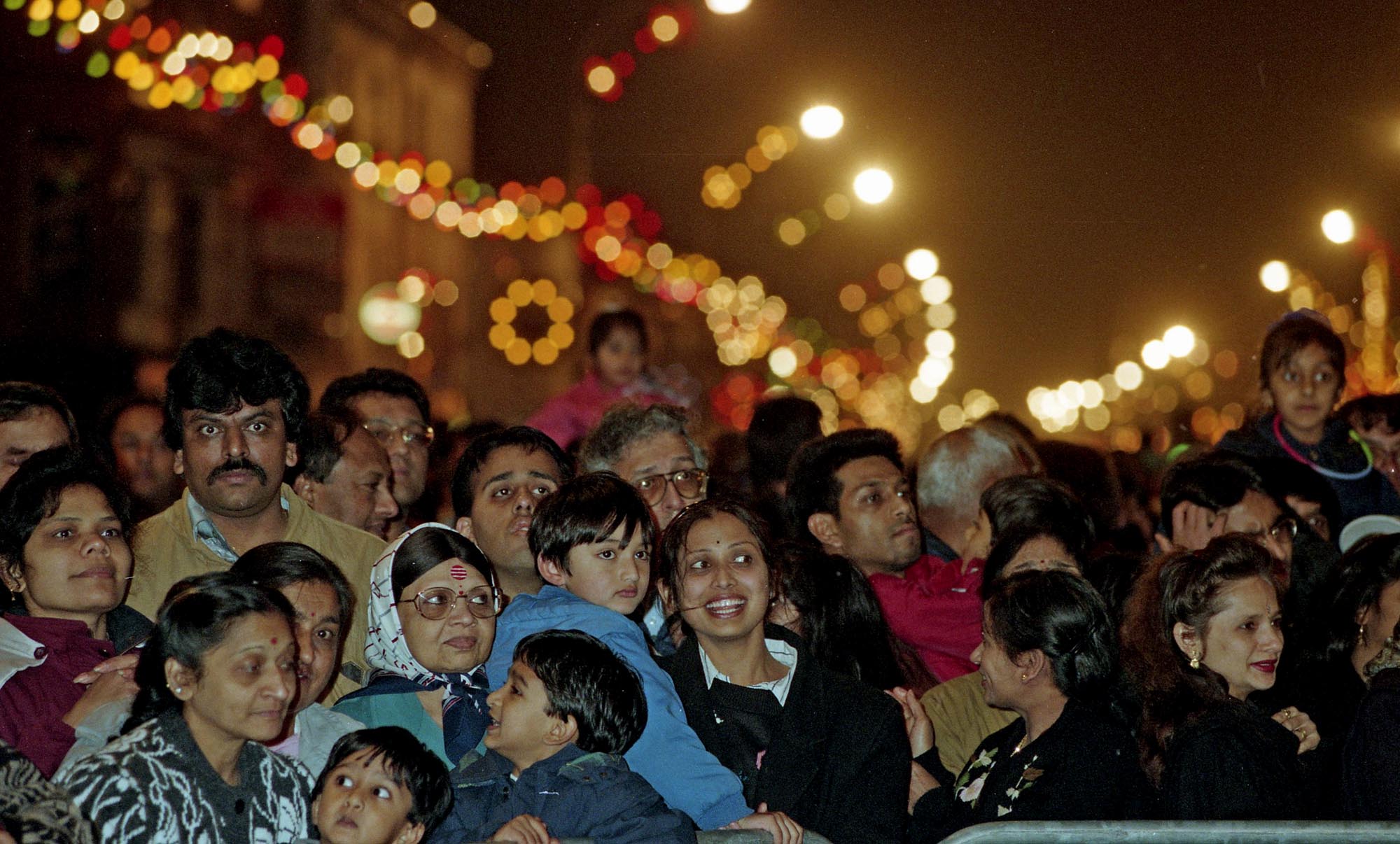
A City of Diversity
Roman Leicester
(47- 500) A military fort was erected, attracting traders and a growing civilian community to Leicester (known as Ratae Corieltauvorum to the Romans). The town steadily grew throughout the reign of the Romans.
Medieval Leicester
(500 – 1500) The early years of this period was one of unrest with Saxon, Danes and Norman invaders having their influences over the town. Later, of course, came Richard III and the final battle of the Wars of the Roses was fought on Leicester’s doorstep.
-
The Castle Motte1068

-
Leicester Cathedral1086

-
St Mary de Castro1107

-
Leicester Abbey1138

-
Leicester Castle1150

-
Grey Friars1231

-
The Streets of Medieval Leicester1265

-
Leicester Market1298

-
Trinity Hospital and Chapel1330

-
Bow Bridgecirca 1350

-
Church of the Annunciation1353

-
John O’Gaunt’s Cellar1361

-
St John's Stone1381

-
Leicester Guildhall1390

-
The Magazine1400

-
The Blue Boar Inn1400

-
The High Cross1577

Tudor & Stuart Leicester
(1500 – 1700) The wool trade flourished in Leicester with one local, a former mayor named William Wigston, making his fortune. During the English Civil War a bloody battle was fought as the forces of King Charles I laid siege to the town.
Georgian Leicester
(1700 – 1837) The knitting industry had really stared to take hold and Leicester was fast becoming the main centre of hosiery manufacture in Britain. This new prosperity was reflected throughout the town with broader, paved streets lined with elegant brick buildings and genteel residences.
-
Great Meeting Unitarian Chapel1708

-
The Globe1720

-
17 Friar Lane1759

-
Black Annis and Dane Hills1764

-
Leicester Royal Infirmary1771

-
New Walk1785

-
Freemasons’ Hall1790

-
Gaols in the City1791

-
Friars Mill1794

-
City Rooms1800

-
Development of Highfields1800

-
Wesleyan Chapel1815

-
20 Glebe Street1820

-
Charles Street Baptist Chapel1830

-
Glenfield Tunnel1832

-
James Cook1832

Victorian Leicester
(1837 – 1901) The industrial revolution had a huge effect on Leicester resulting in the population growing from 40,000 to 212,000 during this period. Many of Leicester's most iconic buildings were erected during this time as wealthy Victorians made their mark on the town.
-
Leicester Union Workhouse1839

-
Campbell Street and London Road Railway Stations1840

-
The Vulcan Works1842

-
Belvoir Street Chapel1845

-
Welford Road Cemetery1849

-
Leicester Museum & Art Gallery1849

-
King Street1850

-
Cook’s Temperance Hall & Hotel1853

-
Amos Sherriff1856

-
Weighbridge Toll Collector’s House1860

-
4 Belmont Villas1862

-
Top Hat Terrace1864

-
Corah and Sons - St Margaret's Works1865

-
Kirby & West Dairy1865

-
The Clock Tower1868

-
Wimbledon Works1870

-
The Leicestershire Banking Company1871

-
St Mark’s Church and School1872

-
Victorian Turkish Baths1872

-
The Town Hall1876

-
Central Fire Stations1876

-
Aylestone Road Gas Works and Gas Museum1879

-
Gas Workers Cottages1879

-
Leicestershire County Cricket Club1879

-
Welford Road Tigers Rugby Club1880

-
Secular Hall1881

-
Development of Highfields1800

-
Abbey Park1881

-
Abbey Park Buildings1881

-
Victoria Park and Lutyens War Memorial1883

-
Leicester Fosse FC 18841884

-
Leicester Coffee and Cocoa Company Coffee Houses1885

-
St Barnabas Church and Vicarage1886

-
Abbey Pumping Station1891

-
Luke Turner & Co. Ltd.1893

-
West Bridge Station1893

-
Thomas Cook Building1894

-
The White House1896

-
Alexandra House1897

-
Leicester Boys Club1897

-
Grand Hotel and General Newsroom1898

-
Highfield Street Synagogue1898

-
Western Park1899

-
Asfordby Street Police Station1899

-
Leicester Central Railway Station1899

Edwardian Leicester
(1901 – 1910) Electric trams came to the streets of Leicester and increased literacy among the citizens led to many becoming politicised. The famous 1905 ‘March of the Unemployed to London’ left from Leicester market when 30,000 people came to witness the historic event.
-
YMCA Building1900

-
The Palace Theatre1901

-
Pares's Bank1901

-
Coronation Buildings1902

-
Halfords1902

-
High Street1904

-
George Biddles and Leicester's Boxing Heritage1904

-
Municipal Library1905

-
Leicester Boys Club1897

-
The Marquis Wellington1907

-
Guild Hall Colton Street1909

-
Women's Social and Political Union Shop1910

-
Turkey Café1901

Early 20th Century Leicester
(1910 – 1973) The diverse industrial base meant Leicester was able to cope with the economic challenges of the 1920s and 1930s. New light engineering businesses, such as typewriter and scientific instrument making, complemented the more traditional industries of hosiery and footwear manufacturing.
-
Dryad Handicrafts1912

-
De Montfort Hall1913

-
Leicester During the First World War1914

-
Fox’s Glacier Mints1918

-
Statue of Liberty1919

-
Housing in Saffron Lane1924

-
Winstanley House1925

-
Housing in North Braunstone1926

-
Lancaster Road Fire Station1927

-
The Little Theatre1930

-
Saffron Hill Cemetery1931

-
Braunstone Hall Junior School1932

-
Former City Police Headquarters1933

-
Savoy Cinema1937

-
Eliane Sophie Plewman1937
-
City Hall1938

-
Athena - The Odeon Cinema1938

-
The Blitz in Highfields1940

-
Freeman, Hardy and Willis - Leicester Blitz1940

-
Leicester Airport1942

-
Leicester’s Windrush Generations1948

-
Netherhall Estate1950
-
Housing at Eyres Monsell1951

-
Silver Street and The Lanes1960

-
Bostik1960

-
Auto-Magic Car Park (Lee Circle)1961

-
University of Leicester Engineering Building1963

-
Sue Townsend Theatre1963

-
Central Mosque1968

-
Belgrave Flyover1973

Modern Leicester
(1973 – present day) Industry was still thriving in the city during the 1970s, with the work opportunities attracting many immigrants from all over the world. While industry has declined in recent years, excellent transport links have made Leicester an attractive centre for many businesses. The City now has much to be proud of including its sporting achievements and the richness of its cultural heritage and diversity.
-
Haymarket Theatre1973

-
The Golden Mile1974

-
Acting Up Against AIDS1976

-
Belgrave Neighbourhood Centre1977

-
Diwali in Leicester1983

-
Leicester Caribbean Carnival1985

-
Samworth Brothers1986

-
Jain Centre1988

-
Guru Nanak Dev Ji Gurdwara1989

-
King Power Stadium2002

-
LCB Depot2004

-
Curve2008

-
BAPS Shri Swaminarayan Mandir2011

-
Makers Yard2012

-
VJ Day 80th Anniversary2020

- Roman Leicester
- Medieval Leicester
- Tudor & Stuart Leicester
- Georgian Leicester
- Victorian Leicester
- Edwardian Leicester
- Early 20th Century Leicester
- Modern Leicester
















































































































































